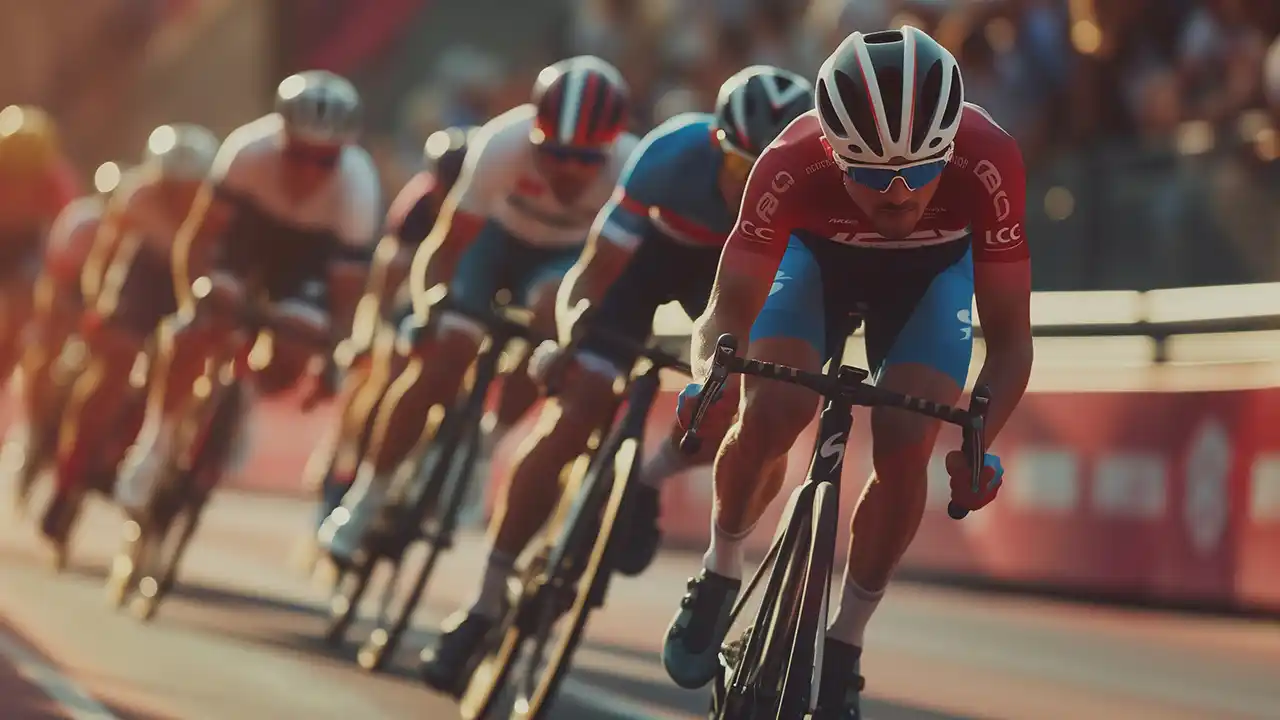In the second of our “Unusual Sports” series, we take a look at Keirin – a cycle race that can sometimes resemble a bar brawl.
We take a look at the history of the sport, and examine the size of the betting market attached to it. We also look at the future direction of the sport, and how that may affect the landscape from a sports betting perspective.
Table of Contents
Keirin to the uninitiated
In the summer of 2012, the UK was basking in the warm glow of a wildly successful Olympics. The organisation had turned out to be top-notch, and the GB team was performing brilliantly.
At the vanguard was the British cycling team. Their “marginal gains” approach and a laser-focus on the Olympics had already seen huge medal returns. The British public were warming to indoor cycling, as they started to pay attention to the nuances of the sport.
Then the Keirin program got started. And an unsuspecting public collectively asked “What IS this?”
What they were treated to was, at first glance, an odd spectacle. Six cyclists squeezed up on the banks of the velodrome, waiting as an ancient-looking motorbike buzzed past them on the inside of the track. The starter’s pistol goes off.
And they all follow the ancient-looking motorbike (it’s called a Derny), forming an orderly line.
So far, so odd. Is this actually a race?
The phony war feels like it lasts forever, as the Derny gradually brings the speed of the group up from 30 km/h to a sharper 50 km/h.
Finally the Derny swings off the track. And mayhem ensues.
In 2012, Chris Hoy and Victoria Pendleton brought home gold in the Men’s and Women’s Keirin finals. If you watch those races back, you can see wild ebbs and flows in the short time that it takes to get to the finish line. In only three laps the lead can change hands several times, and both of those Olympic finals were incredibly tight on the line.
When the sun set on the 2012 games, Britain had dominated and fallen for a sport that seemed chaotic and idiosyncratic.
What they might not have known is that Keirin was born out of a country rebuilding itself after the horrors of the second world war.
A brief history of Keirin
The birth of Keirin in 1948
In 1948, Japan’s government needed to generate cash to support the enormous post-war regeneration program. In a policy masterstroke, they legalised betting on Keirin, and built 70 velodromes across the country to allow the sport to grow.
Keirin was one of only four sports that the people of Japan were allowed to bet on, and predictably, the money rolled in.
Keirin School
Formed in 1950, the Keirin School covers all aspects of becoming a professional Keirin rider. Successful home-grown applicants stay on campus six days a week, 11 months a year. The riders learn every possible aspect of the sport, effectively becoming masters of their craft. The Keirin School is typical of the Japanese approach to learning – discipline, rigorous attention to detail.
Early problems with race-fixing
The early years of Keirin were blighted by fixing – the Japanese Yakuza saw weakness and exploited the conditions to manipulate the market. In response, the governing bodies drew up rules that added strict behavioural codes on the riders, forbidding them to make eye contact with the crowd for fear of manipulation or signalling.
Modern day Keirin
Japanese Keirin race schedule
There are approximately seventy race days on the Keirin schedule, so there’s always plenty of action to take in.
The Keirin Grand Prix is one of the season’s highlights, and a fixture at the top of the Japanese sporting calendar. The winner of the finals will pocket around a million dollars, and a huge amount of money will change hands in bets at that event.
International riders in Keirin
Nowadays Keirin has a presence from international riders. Chris Hoy went to Keirin School in 2005 to learn his craft, and a small number of “Gaijin” foreign riders are accepted onto the program each year.
Overall, though, Keirin is still a domestic sport, and the profits from Keirin still go to government-backed programs.
Differences between Japanese Keirin and Olympic Keirin
To put it bluntly, Japanese Keirin makes Olympic Keirin seem gentile. It’s essentially a full-contact sport, and far more basic steel bikes replace the carbon fibre that Olympians favour.

In Japan the riders wear protective padding, and are even taught how to fall. It’s a baked-in element of their racing lives, and they are prepared for it.
It’s also not uncommon to see 9 racers line up in Japanese Keirin while only 6 will make the starting line in an Olympic race.
Betting on Keirin
How to bet on Keirin races
Ostensibly, betting on Keirin races is very similar to horse racing. You pick winners, a top three, a reverse forecast – all the usual markets are available to you.
One popular item, called Dakoto! 7, requires a punter to pick all seven winners out of seven different races. The odds on this quickly become pretty astronomical and the prizes for winning this are accordingly huge.
If nobody scoops Dakoto! 7, it often gets rolled over to the next event in the series.
Where to bet on Keirin
If you’re in Japan, you can bet at the event velodrome itself, online, or at sanctioned ticket offices offsite across the country.
Can I bet on Keirin if I’m not in Japan?
You may be able to find a sportsbook that specialises in unusual markets, but generally speaking Japanese Keirin is not covered by bookmakers.
Keirin is also successfully established in Korea, and, just like Japan, is a really tricky place to get a bet on if you don’t actually live there.
So unless you’re planning to fill out your residency papers for either of those great nations, you’re going to need a different route. We’ll take a look at how that path may materialise shortly.
Keirin as a sports betting market
Keirin betting market turnover
According to figures from morecadence.jp, betting slip turnover has increased from around 600 million Yen in 2014 up to 1.2 trillion Yen in 2023. Despite a continued downturn in event attendance, online markets have allowed people to expand their betting on Keirin races. With increased market access and TV coverage for punters, turnover has been going up yearly, with an aggressive increase seen during the Covid pandemic. During Covid, Keirin continued to fulfil a social contract – taking money for bets, pushing profits back into the system, and, for a time, offering entertainment in tough times.
It’s worth noting that since 2021 around 75 to 80% of betting turnover has occurred online.
Should my betting company be carrying a Keirin Sportsbook?
As we touched on earlier, there aren’t many companies carrying Keirin. With the Japanese and Korean organisations being inward-focused, the likelihood is that the regulatory waters are tricky to tread. Combine this with the amount of marketing spend you’d have to invest just to raise awareness of the event, the numbers against effort probably don’t match up.
Where things become interesting is the arrival of a new organization called DerbyWheel.
What is Derbywheel?
DerbyWheel could be your pathway to being able to bet on Keirin races, but their offering is currently in a logjam with the UCI, cycling’s governing body.
DerbyWheel is a new venture designed to take the sport of Keirin into international waters, and, one presumes, open up a latent market with phenomenal sportsbook potential too. Cycling is already a hugely popular sport around the world, and the idea of DerbyWheel is to apply the Keirin blueprint to a new market.
If you’ve gotten to this point of the article and you’re champing at the bit to put a few quid down, we’ll have to stop you there. The Derny bike has not gone past. There are no two-wheeled warriors ready to throw down. The UCI have said a firm “Non merci” to their proposals, and the event’s legitimacy is now in flux.
The UCI issued this statement in December 2023;
“To date, the UCI has not been provided with the necessary information to assess compliance with the UCI Regulations and is thus not in a position to confirm its authorisation for these DerbyWheel events. As such, they are currently considered « forbidden events » pursuant to Article 1.2.019 of the UCI Regulations.”
For now we shall have to wait, but DerbyWheel do plan to offer the riders who are currently going through Keirin induction a shot at a massive prize pot for each event, and, as usual, money does tend to talk.
In it’s own way, this standoff is somewhat reminiscent of the standoff between the PGA tour and LIV golf. That looks like it will eventually cave in to monetary pressures, and with the market potential of Keirin not in dispute, don’t be too surprised if this conflict is resolved.
And once that happens, you can finally pop a bet on when nine brave souls line up to fly towards the finish line, with shoulder barging, late surges, crashes and spectacular speed to keep you glued to the action.




